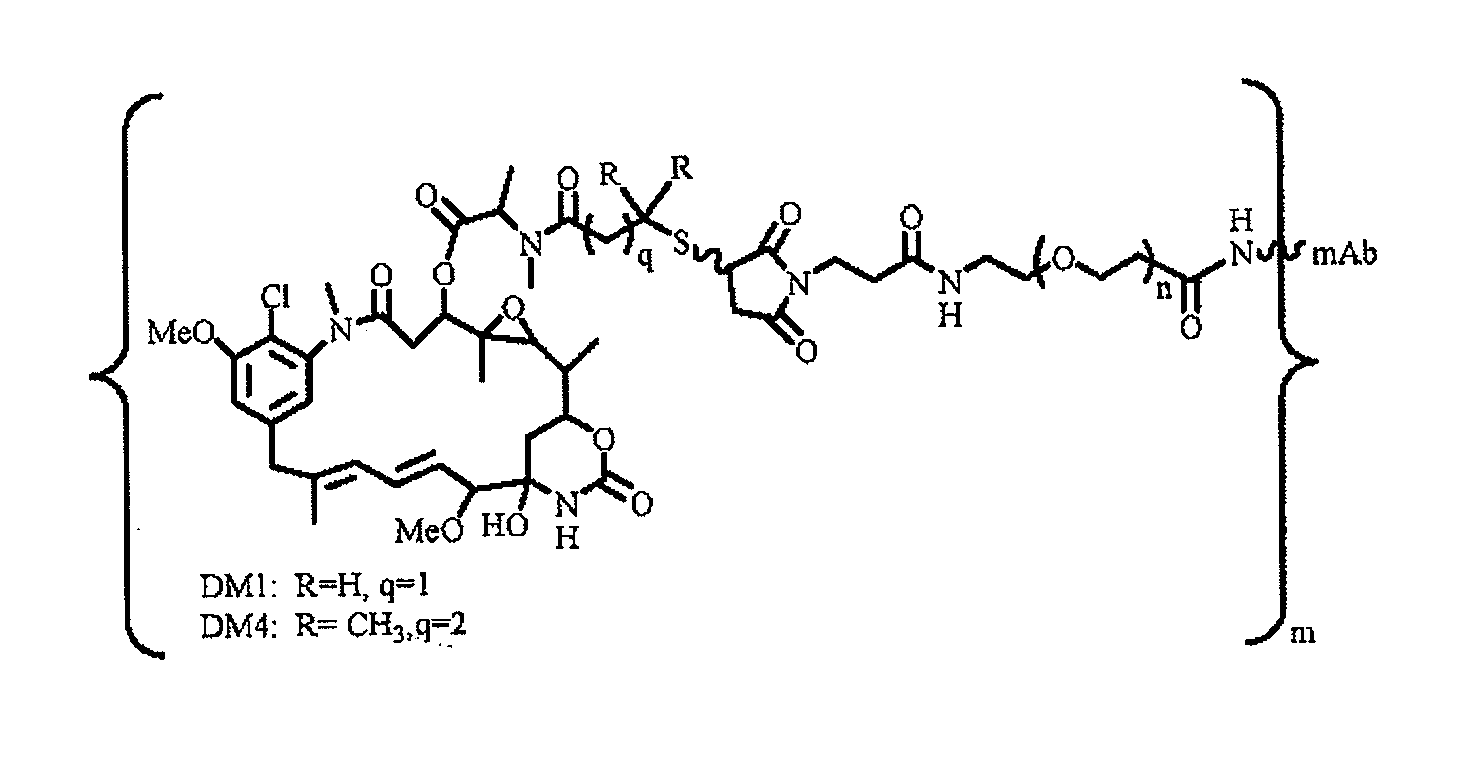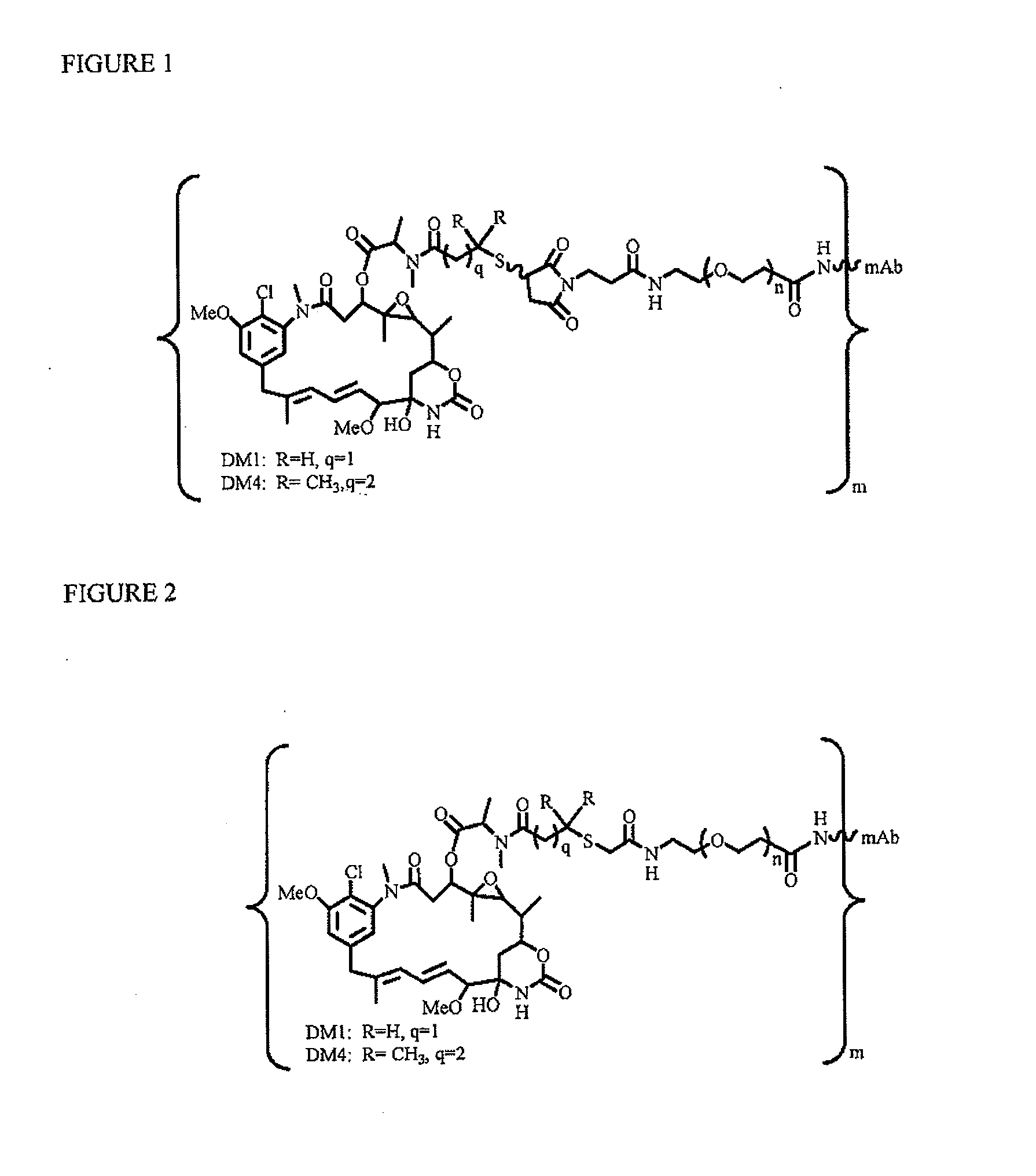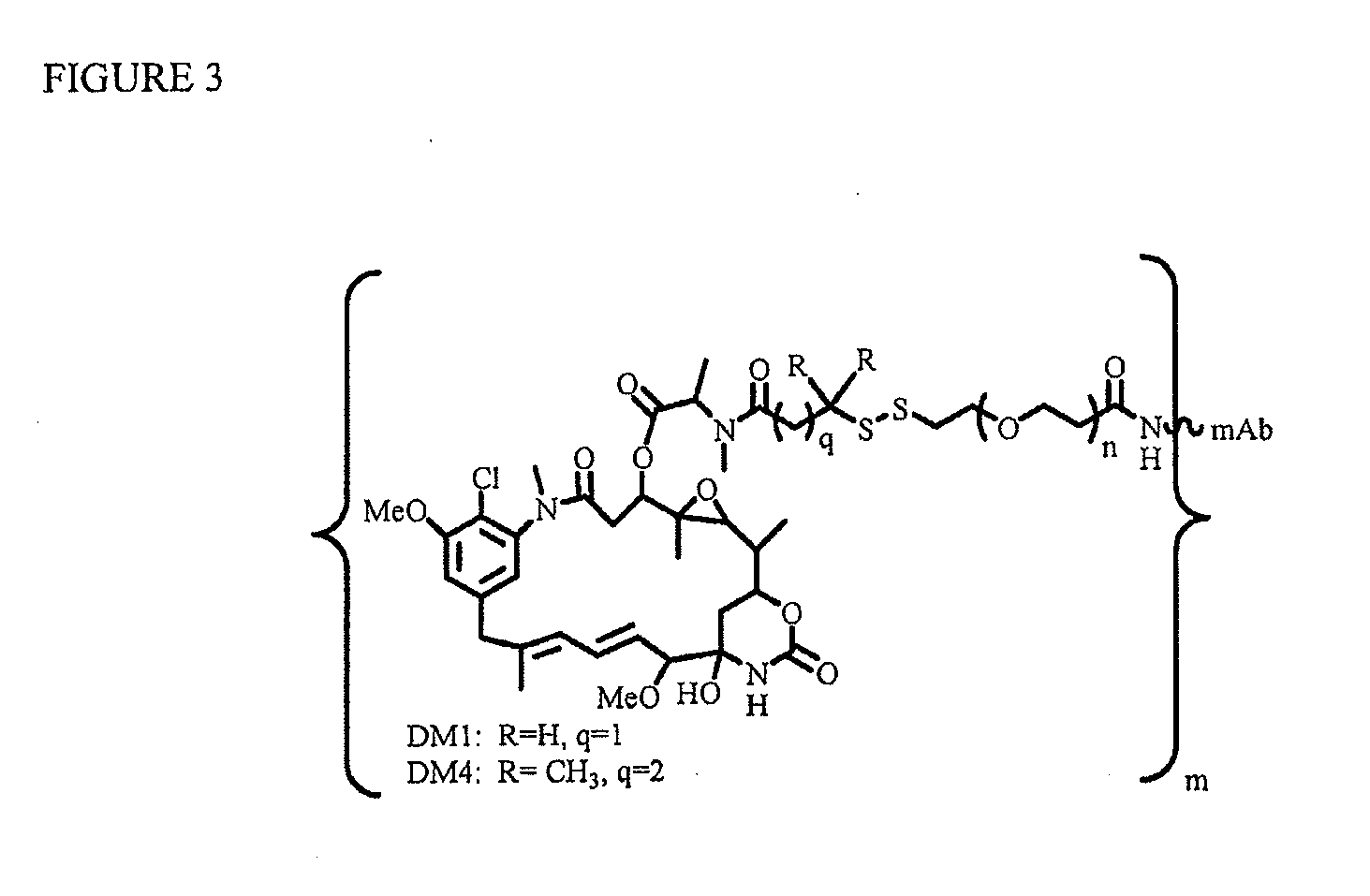Potent conjugates and hydrophilic linkers
a technology of conjugates and hydrophilic links, applied in the field of new linkers, can solve the problems of low to modest anti-tumor activity in patients, loss of biological activity, and diminished potency of drugs, and achieve the effect of improving the manner in which drugs are linked and increasing the activity of drugs
- Summary
- Abstract
- Description
- Claims
- Application Information
AI Technical Summary
Benefits of technology
Problems solved by technology
Method used
Image
Examples
examples
[0211]Without being bound by any particular aspect, methods are described for the synthesis of polyethylene glycol ((CH2CH2O)n)-linked drugs with different reactive linkers for conjugation with cell-binding agents. These conjugation methods include a one-step conjugation of antibody with drugs such as maytansinoids linked via polyethylene glycol ((CH2CH2O)n) linker by reaction at N-hydroxysuccinimide (NHS) reactive group.
[0212]Also, described are methods of synthesizing disulfide-group containing polyethylene glycol ((CH2CH2O)n)-linked drugs with different reactive linkers for conjugation with antibody. These conjugation methods include a one-step conjugation of antibody with drugs such as maytansinoid linked with disulfide-group having polyethylene glycol ((CH2CH2O)n) linker via reaction at a N-hydroxysuccinimide (NHS) reactive group.
[0213]The following examples, which are illustrative only, are not intended to limit the present invention.
example i
Conjugation of Antibody with Several Maytansinoid Molecules Linked Per Antibody Molecule by Disulfide Linkers Containing Traditional Aliphatic Carbon Spacers
[0214]In a two-step process to conjugate an antibody with several molecules of the maytansinoid DM4 or DM1, a humanized antibody was first modified with a commercially available heterobifunctional linker (SPDB) containing both an amine-reactive N-hydroxysuccinimide group (NHS group) and a thiol-reactive 2-pyridyldithio group (-SSPy group) to incorporate several molecules of the linker in the antibody molecule (as described in W. C. Widdison et al., J. Med. Chem., 2006, 49, 4392-4408). Following the incorporation of the reactive linkers in the antibody molecule, in a second reaction step the maytansinoid DM4 or DM1 with a reactive thiol group was added to the linker-modified antibody to conjugate the maytansinoid to antibody by disulfide bonds. In a specific example, a humanized antibody at a concentration of 5-10 mg / ml was modif...
example ii
Conjugation of Antibody with Several Maytansinoid Molecules Linked Per Antibody Molecule by Disulfide Linkers Containing Hydrophilic Polyethylene Oxide Spacers (PEGn, or (—CH2—CH2—O)n=1-14)
[0215]To explore if hydrophilic spacers such as polyethylene oxide (PEGn, or (—CH2—CH2—O)n=1-14) could perhaps prevent the aggregation and precipitation of antibody-maytansinoid conjugates with a high number of maytansinoid molecules (>4 average per antibody molecule), several new heterobifunctional and monofunctional maytansinoid derivatives were prepared which could be conjugated to antibody by direct modification or a two-step reaction involving the initial derivatization of antibody at lysine residues followed by the reaction of maytansinoids (see, for examples, FIGS. 3, 6, 11, and 12).
Synthesis of 15-(2-pyridyldithio)-4,7,10,13-tetraoxapentadecanoic acid
[0216]A solution of aldrithiol-2 (1.17 g, 5.31 mmol) was prepared in 5.0 mL of 1,2-dimethoxyethane in a 10 mL round bottom flask. To the reac...
PUM
| Property | Measurement | Unit |
|---|---|---|
| chemical equation | aaaaa | aaaaa |
| hydrophilic | aaaaa | aaaaa |
| lipophobic | aaaaa | aaaaa |
Abstract
Description
Claims
Application Information
 Login to View More
Login to View More - R&D
- Intellectual Property
- Life Sciences
- Materials
- Tech Scout
- Unparalleled Data Quality
- Higher Quality Content
- 60% Fewer Hallucinations
Browse by: Latest US Patents, China's latest patents, Technical Efficacy Thesaurus, Application Domain, Technology Topic, Popular Technical Reports.
© 2025 PatSnap. All rights reserved.Legal|Privacy policy|Modern Slavery Act Transparency Statement|Sitemap|About US| Contact US: help@patsnap.com



